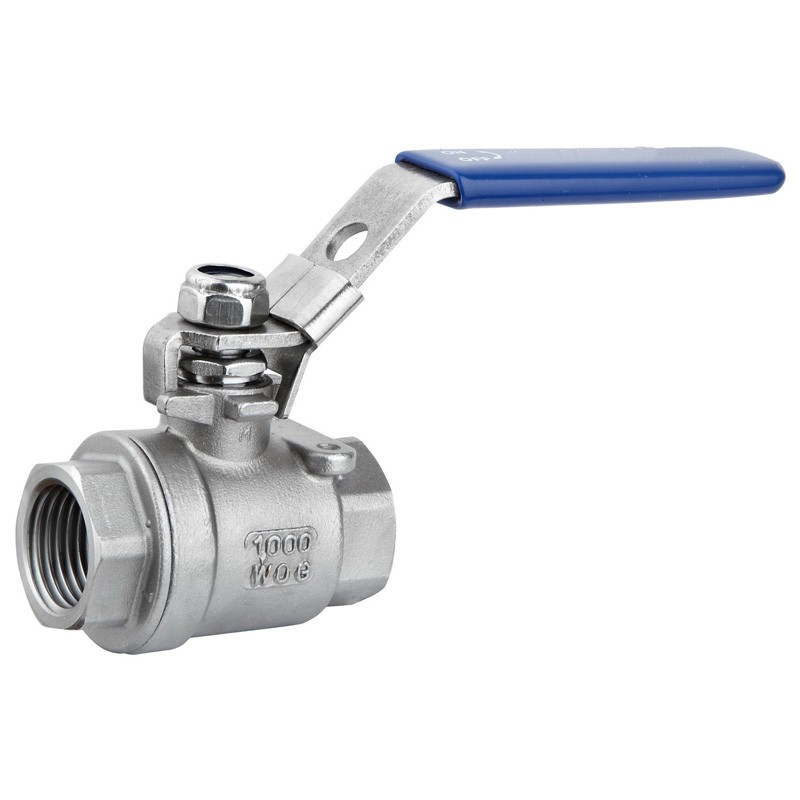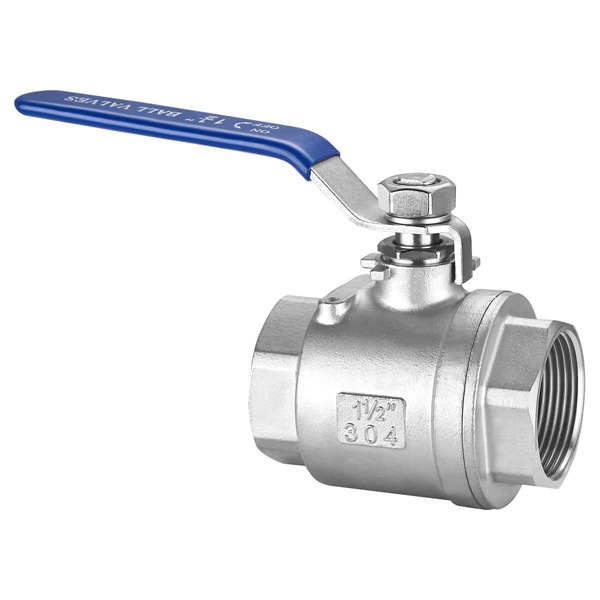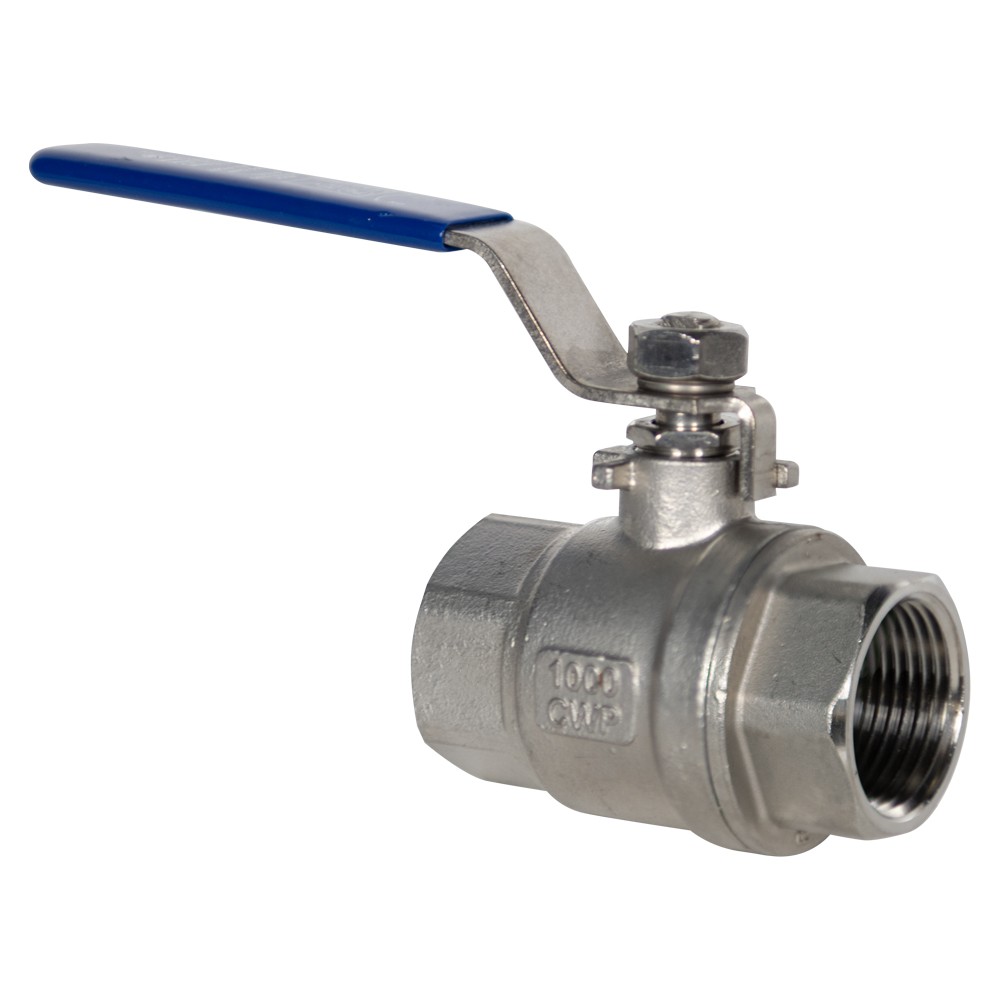Durable 2 Piece Ball Valves for Reliable Flow Control
Understanding the Versatility of Two Piece Ball Valves in Industrial Applications
In the vast landscape of industrial fluid control, the 2 piece ball valves stand out as an indispensable component due to their robust design, ease of maintenance, and reliable performance across diverse sectors. These valves are engineered to provide efficient on/off control, making them a preferred choice for applications requiring quick shut-off capabilities and tight sealing. The industry is currently witnessing a significant trend towards higher-performance materials and more precise manufacturing techniques, driven by the demand for enhanced safety, extended service life, and reduced operational costs in challenging environments. The focus is increasingly on solutions that can withstand corrosive media, extreme temperatures, and high pressures, while also offering sustainability benefits through energy efficiency and minimized leakage.
The global market for industrial valves, particularly for specialized components like the two piece ball valve, is experiencing steady growth, propelled by infrastructure development, expansion in oil & gas, chemical processing, and water treatment industries. End-users are prioritizing products that not only meet stringent regulatory standards but also offer significant total cost of ownership (TCO) advantages. This includes factors such as longevity, minimal maintenance requirements, and the ability to integrate seamlessly into automated systems. The design of a ball valve two piece facilitates easier inline servicing compared to single-piece designs, contributing to reduced downtime and operational efficiency, a critical aspect for continuous process industries.

Technical Specifications and Precision Engineering of Q11f-16p Stainless Steel Two-Piece Ball Valve
The selection of a specific 2 piece ball valves model, such as the Q11f-16p Stainless Steel Two-piece Ball Valve, is often predicated on its detailed technical specifications, which dictate its suitability for particular applications. This particular model, known for its robust construction, embodies the critical design principles required for high-performance fluid handling. Key parameters include nominal pressure, applicable temperature range, and material composition. The "16P" in its designation typically refers to a nominal pressure of PN16, signifying a working pressure of up to 1.6 MPa (approximately 232 psi), suitable for a wide array of medium-pressure industrial processes. Its stainless steel body, often 304 or 316 grade, provides exceptional corrosion resistance, making it ideal for aggressive chemical environments.
Understanding terms like "full bore" versus "reduced bore" is crucial. A full bore design ensures that the internal diameter of the valve is identical to that of the pipeline, minimizing pressure drop and turbulences, which is particularly beneficial for applications involving slurries or viscous fluids. Conversely, a reduced bore valve has a smaller internal diameter than the pipeline, leading to a slight pressure drop but often resulting in a more compact and cost-effective design. For the Q11f-16p, its design prioritizes optimal flow characteristics while maintaining structural integrity. The valve's sealing mechanism typically relies on PTFE (Polytetrafluoroethylene) or RPTFE seats, offering excellent chemical compatibility and tight shut-off, with an operating temperature range that typically spans from -29°C to 180°C, though specific ratings can vary based on seat material and application.
| Parameter | Specification | Notes |
|---|---|---|
| Nominal Size (DN) | DN15 - DN100 (1/2" - 4") | Common range for this type |
| Nominal Pressure (PN) | PN16 (1.6 MPa, 232 psi) | Standard for many industrial applications |
| Body Material | SS304, SS316 (CF8, CF8M) | Corrosion resistance for diverse media |
| Ball Material | SS304, SS316 | Matches body material for compatibility |
| Seat Material | PTFE, RPTFE | Excellent chemical resistance and sealing |
| Operating Temperature | -29°C to 180°C (approx.) | Dependent on seat material |
| End Connection | Threaded (NPT, BSP, G), Flanged | Versatile connection options |
| Operation | Lever, Worm Gear, Pneumatic, Electric | Manual or automated control |
| Design Standard | API 608, ASME B16.34, ISO 17292 | Ensures quality and compatibility |
| Testing Standard | API 598, EN 12266-1 | Guarantees performance and leak-tightness |

Manufacturing Process and Rigorous Quality Assurance for 2 Piece Ball Valves
The reliability and longevity of a 2 piece stainless steel ball valve are direct reflections of its manufacturing process and the stringent quality control measures applied throughout production. The journey typically begins with material selection, where high-grade stainless steel (e.g., ASTM A351 CF8M for 316L equivalent, or CF8 for 304) is chosen for its superior corrosion resistance and mechanical properties. The primary forming methods include precision casting or forging. Casting involves pouring molten metal into a mold, suitable for intricate shapes, while forging uses localized compressive forces to shape metal, resulting in enhanced strength and reduced porosity. Both methods are followed by extensive CNC machining to achieve precise dimensions for the body, ball, and stem, ensuring perfect fit and tight tolerances crucial for sealing and smooth operation.
Post-machining, components undergo a series of surface treatments, such as polishing or passivation, to further enhance corrosion resistance and provide a clean finish. The assembly process is meticulously carried out, involving the precise seating of the ball, stem, and seals within the two-piece body. Critical to the valve's performance is its testing phase, which adheres to international standards like ISO 5208 for pressure testing and API 598 for valve inspection and testing. These tests include hydrostatic shell tests to verify the structural integrity of the valve body and seat leakage tests to confirm bubble-tight shut-off. Furthermore, specialized tests like cryogenic testing or fire-safe testing (to API 607 standards) may be performed based on specific application requirements. This comprehensive approach to manufacturing and inspection guarantees that each two piece ball valve meets or exceeds industry benchmarks for safety, reliability, and service life, typically offering a lifespan exceeding 10 years under proper operating conditions.

Key Advantages and Performance Benefits in Critical Applications
The inherent design of a 2 piece ball valves offers distinct advantages that contribute to its widespread adoption across demanding industries. Its primary benefit lies in its simplicity and effectiveness for on/off applications, providing rapid quarter-turn operation and excellent sealing capabilities, even after prolonged periods of inactivity. The two-piece body construction allows for easier assembly and maintenance, simplifying the replacement of seats and seals without requiring the entire valve to be removed from the pipeline in many cases. This "repair-in-place" capability significantly reduces maintenance time and associated costs, directly impacting operational efficiency and minimizing downtime in continuous process environments.
Beyond maintainability, the Q11f-16p Stainless Steel Two-piece Ball Valve, specifically, excels in performance due to its material choice. Stainless steel provides superior resistance to corrosion from a wide array of chemicals, acids, and alkaline solutions, making it ideal for the petrochemical, chemical processing, and pharmaceutical industries where media purity and integrity are paramount. Its robust construction also contributes to excellent pressure containment and temperature resilience. Furthermore, the full bore design often associated with these valves ensures minimal pressure drop, which translates into energy savings by reducing pump load and fluid friction. In applications like municipal water supply and drainage, where long-term reliability and low leakage rates are critical, these valves offer durable service and contribute to environmental protection by preventing leaks and conserving resources.

Diverse Application Scenarios and Industry Impact of Two Piece Ball Valves
The adaptability of the ball valve two piece design makes it suitable for a vast array of industrial applications, solidifying its position as a cornerstone in fluid control systems worldwide. In the demanding oil and gas sector, these valves are deployed in upstream, midstream, and downstream operations, including wellhead control, pipeline isolation, and refinery processes, where their robust nature handles high pressures and abrasive media effectively. The chemical and petrochemical industries heavily rely on 2 piece ball valves for managing corrosive chemicals, solvents, and high-purity media, leveraging the superior chemical resistance of stainless steel and PTFE seats to prevent contamination and ensure process safety.
Beyond these critical sectors, their utility extends to power generation plants for water and steam systems, pulp and paper mills for slurry handling, and the food and beverage industry for sanitary applications (with specific certifications). In municipal water treatment and distribution, they provide reliable shut-off for various lines, from raw water intake to treated water delivery, demonstrating their versatility. The Q11f-16p Stainless Steel Two-piece Ball Valve, with its material integrity and design, has been successfully implemented in numerous projects, ranging from large-scale industrial complexes to specialized manufacturing facilities, consistently delivering reliable performance and contributing to operational continuity. Feedback from operators often highlights the ease of automation and integration into existing control systems, making them a future-proof investment for modern industrial infrastructures.

Custom Solutions and Manufacturer Comparison for Optimal 2 Piece Ball Valve Selection
Selecting the right 2 piece ball valves for a specific industrial application requires careful consideration of various factors, including technical specifications, required certifications, and overall cost-effectiveness. While standard models like the Q11f-16p Stainless Steel Two-piece Ball Valve meet a wide range of needs, certain projects demand tailored solutions. Reputable manufacturers offer extensive customization options, including specialized materials (e.g., Duplex stainless steel for extreme corrosion, Hastelloy for specific chemical resistance), different end connections (e.g., butt-weld, socket-weld), or specific actuation mechanisms (e.g., pneumatic, electric actuators with specific control protocols like Modbus or Profibus). Our engineering team collaborates closely with clients to understand unique operational parameters, process media characteristics, and environmental conditions to design and deliver bespoke valve solutions that ensure optimal performance and compliance.
When evaluating manufacturers of two piece ball valve products, it is crucial to look beyond just the price tag. Factors such as adherence to international standards (e.g., ISO 9001 for quality management, API certifications for oil & gas applications), years of industry experience, and post-sales support significantly influence the total value proposition. Below is a comparative overview, illustrating how key attributes differentiate manufacturers in the market, highlighting our commitment to quality and customer value:
| Feature/Criteria | Typical Manufacturer A | Typical Manufacturer B | Our Product (Q11f-16p Stainless Steel Two-piece Ball Valve) |
|---|---|---|---|
| Primary Material Standard | ASTM A216 WCB (Carbon Steel) | ASTM A351 CF8 (Stainless Steel) | ASTM A351 CF8M (316 SS equivalent) |
| Pressure Rating Range | PN10 - PN25 (Class 150 - 300) | PN16 - PN40 (Class 150 - 600) | PN16 (Standard, but higher available on request) |
| Standard Sealing Material | PTFE | PTFE, RPTFE | PTFE, RPTFE (Custom options: PEEK, Devlon) |
| Certifications & Standards | ISO 9001 | ISO 9001, CE | ISO 9001, API 607 (Fire Safe), CE, EAC |
| Customization Options | Limited | Moderate | Extensive (materials, connections, actuation) |
| Warranty Period | 12 Months | 18 Months | 24 Months (Standard) |
| After-Sales Support | Standard | Responsive | Dedicated Technical & Field Support |
Building Trust: Our Commitment to Quality, Support, and Customer Satisfaction
Establishing trust with B2B clients goes beyond product specifications; it encompasses reliability in delivery, robust after-sales support, and transparent communication. Our company is committed to upholding the highest standards of trustworthiness in every aspect of our operations, particularly for critical components like the two piece ball valve. We maintain comprehensive quality management systems, certified to ISO 9001, ensuring consistent product quality from raw material sourcing to final inspection. Our extensive service history, spanning over 15 years in the valve manufacturing industry, stands as a testament to our enduring reliability and deep understanding of client needs. Partnerships with major industrial players across various sectors further underscore our authoritative position in the market.
We understand that minimizing downtime is paramount for our clients. Therefore, we offer transparent delivery cycle estimates, typically ranging from 4 to 8 weeks for standard orders, with expedited options available for urgent requirements. Each 2 piece stainless steel ball valve is backed by a comprehensive warranty, ensuring peace of mind and demonstrating our confidence in the product's durability. Our dedicated customer support team provides expert technical assistance, from pre-sales consultation and engineering support to post-installation troubleshooting. This holistic approach ensures that our clients receive not just a product, but a complete solution supported by industry-leading expertise.
Frequently Asked Questions (FAQ) about 2 Piece Ball Valves
-
Q: What is the typical service life of a stainless steel 2 piece ball valve?
A: With proper installation, maintenance, and operation within specified parameters, a high-quality stainless steel 2 piece ball valves can typically last 10 to 15 years or even longer. Factors like media corrosiveness, operating temperature, and frequency of cycling can influence longevity.
-
Q: Can these valves be used for throttling applications?
A: While ball valves are primarily designed for on/off service, they can be used for throttling in limited applications. However, continuous throttling can lead to seat erosion and reduced service life. For precise flow control, globe valves or specialized control valves are generally recommended.
-
Q: What is the difference between a 2-piece and a 3-piece ball valve?
A: A 2-piece design has two body pieces, typically bolted together, with the ball and seats contained within. A 3-piece design has a central body section that houses the ball and seats, flanked by two end caps. The 3-piece design allows for easier in-line maintenance where the central section can be removed without disturbing the pipe connections, which offers greater convenience for frequent servicing compared to the ball valve two piece.
-
Q: Are your valves compliant with international safety standards?
A: Yes, our valves, including the Q11f-16p Stainless Steel Two-piece Ball Valve, are manufactured and tested in accordance with relevant international standards such as ISO, API, ASME, and CE directives, ensuring they meet global safety and performance requirements for various industries.
References and Further Reading
- American Petroleum Institute (API) Standards for Ball Valves: API 608, API 607 (Fire Test for Soft-Seated Quarter-Turn Valves).
- International Organization for Standardization (ISO) Valve Standards: ISO 17292 (Metal Ball Valves for Petroleum, Petrochemical and Allied Industries), ISO 5208 (Industrial valves – Pressure testing of metallic valves).
- American Society of Mechanical Engineers (ASME) Boiler and Pressure Vessel Code, Section VIII (Rules for Construction of Pressure Vessels) and B16.34 (Valves—Flanged, Threaded, and Welding End).
- Manufacturers Standardization Society (MSS) of the Valve and Fittings Industry Standards, such as MSS SP-110 (Ball Valves Threaded, Socket-Welding, Solder Joint, Grooved and Flared Ends).
- Valve Manufacturers Association of America (VMA) Industry Trends and Best Practices Publications.
-
The Key to Fluid Control: Exploring the Advantages of Ball Valves in Industrial SystemsNewsJul.09,2025
-
The Versatile World of 1, 2, and 3 Piece Ball ValvesNewsJul.09,2025
-
Stainless Steel Ball Valves: The Ideal Choice for Efficient Flow ControlNewsJul.09,2025
-
Optimizing Fluid Control with Ball Float ValvesNewsJul.09,2025
-
Manual Gate Valves: Essential for Control and EfficiencyNewsJul.09,2025
-
Everything You Need to Know About Butterfly ValvesNewsJul.09,2025
-
The Versatility of Wafer Type Butterfly ValvesNewsJul.08,2025




